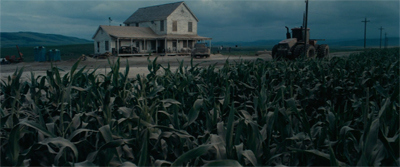Here’s the science that ‘Interstellar’ really gets wrong.
 Full disclosure, I'm late to the party of discussing Interstellar because I’m working in South East Asia on the future of farming and only just got back to Silicon Valley to help connect technologists with a basic sense of where their solutions are hoping to land. Let’s discuss the so far neglected, especially obnoxious, glaring lo-tech blindspot in “Interstellar.” Whether or not Lincoln McConaughey should’ve been pulped in the wormhole, this movie full of imagination and vision about the future shows a braindead disregard for agriculture, or, if it helps: ecosystem design.
Full disclosure, I'm late to the party of discussing Interstellar because I’m working in South East Asia on the future of farming and only just got back to Silicon Valley to help connect technologists with a basic sense of where their solutions are hoping to land. Let’s discuss the so far neglected, especially obnoxious, glaring lo-tech blindspot in “Interstellar.” Whether or not Lincoln McConaughey should’ve been pulped in the wormhole, this movie full of imagination and vision about the future shows a braindead disregard for agriculture, or, if it helps: ecosystem design.
The idea that someone would be called a “good farmer” for monocropping GMO corn with robots after 6 billion people have paid the price of mismanaging Earth is tougher to swallow than the idea that 80 years pass between the first space mission and the second, and the same exact size and type of robot is deployed in the new space ship.
That robotic oversight is a bit lazy and kind of cute because “Interstellar” is part of the decades-old trend of movies that normalize extending empathy to robots. But the failure to imagine a healthy relationship with future Earth derives from an entirely unscientific disdain: “We used to look up at the sky and wonder at our place in the stars. Now we just look down and worry about our place in the dirt.” We do? Because we look at the dirt now, and when we do, we don’t monocrop corn with robots.
There are people transforming acres next to the Dead Sea into oases. Flyblown deadzones the size of France are being turned into fertile, breathtaking and productive regions. This is not happening with industrial additives, robots or monocropping. Nor does it require the sort of water waste that would’ve made “Interstellar’s” endless corn fields flourish.
There are pioneer species that can cling to desert cliffs overlooking the ocean, accreting the moisture and topsoil to support edible plants. Even in the case of a gloomy dust storm, we know how to engineer wind breaks out of local plant species on any continent that would create massive pockets of protected fertility. But any one who looks at the dirt must lack initiative, or at least social status. That’s why we are meant to leave Earth, right?
Look. I work on the NASA campus in Silicon Valley four months of the year because I love space exploration and believe deeply in the value of exponential technologies. But I work in Africa and South East Asia the rest of the time because I love Earth. And in all cases, I like thoughtful, strategic, sustainable approaches to making life better. This movie’s future vision of how we manage our environment belongs in the late 1940s when the same brutalist approach to farming started pushing us towards the dystopic conditions that make Interstellar so desperate.
